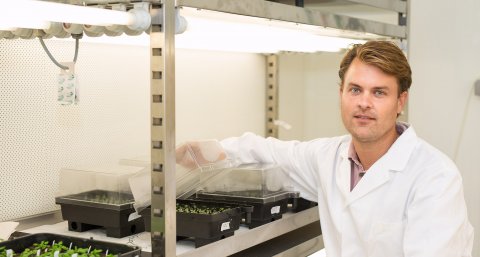Roeland Berendsen
The diversity of microbes associated with plant roots is enormous, in the order of tens of thousands of species. This complex plant-associated microbial community, also referred to as the second genome of the plant, is crucial for plant health.

Recent advances in plant–microbe interactions research revealed that plants are able to shape their rhizosphere microbiome, as evidenced by the fact that different plant species host specific microbial communities when grown on the same soil. Recently we have demonstrated that upon pathogen or insect attack, plants are able to recruit protective microorganisms, and enhance microbial activity to suppress pathogens in the rhizosphere. Apparently, plants are able to cry for help upon attack and selectively attract beneficial microbes to come to their aid. By doing so they leave a soil-borne legacy that protect a next generation of plants growing in the same soil (Cell 172: 1178-180; ISME Journal 12: 1496–1507).
A better understanding of the plant genetic basis of this phenomenon will unlock new possibilities for breeding of crop plants that are better able to employ their microbiomes in their defense and have enhanced capacities for controlling disease. Moreover, from an ecological perspective, a cry for help to the root microbiome could prove to be an integral part of the plant immune response that counteracts the negative soil feedback that most plant experiences when growing in a natural soil. My research focuses on the mechanisms by which plants cry out for help and create a soil-borne legacy and the importance of these legacies for subsequent plant generations.
Profile: Roeland Berendsen


